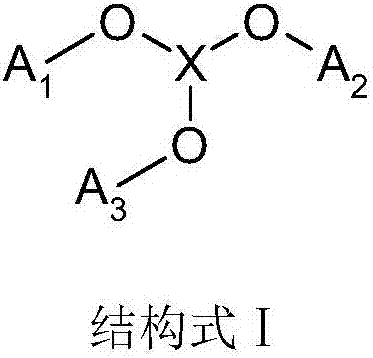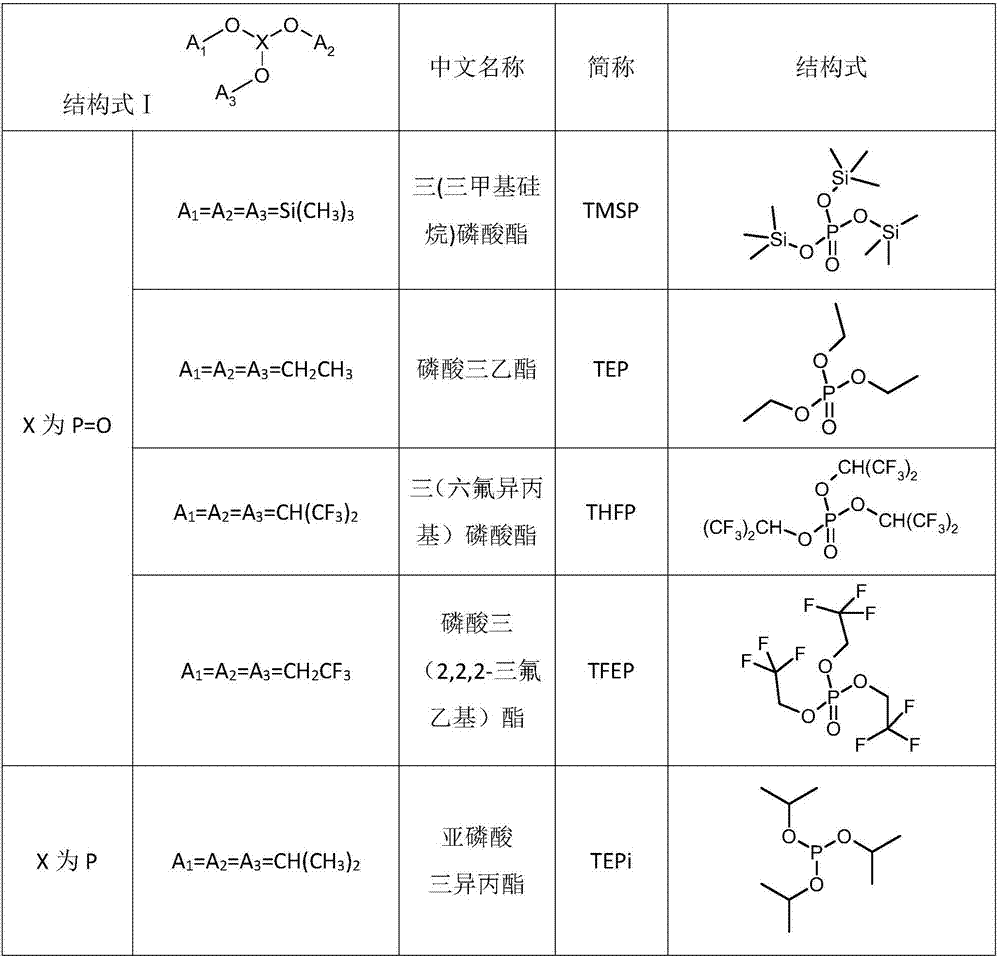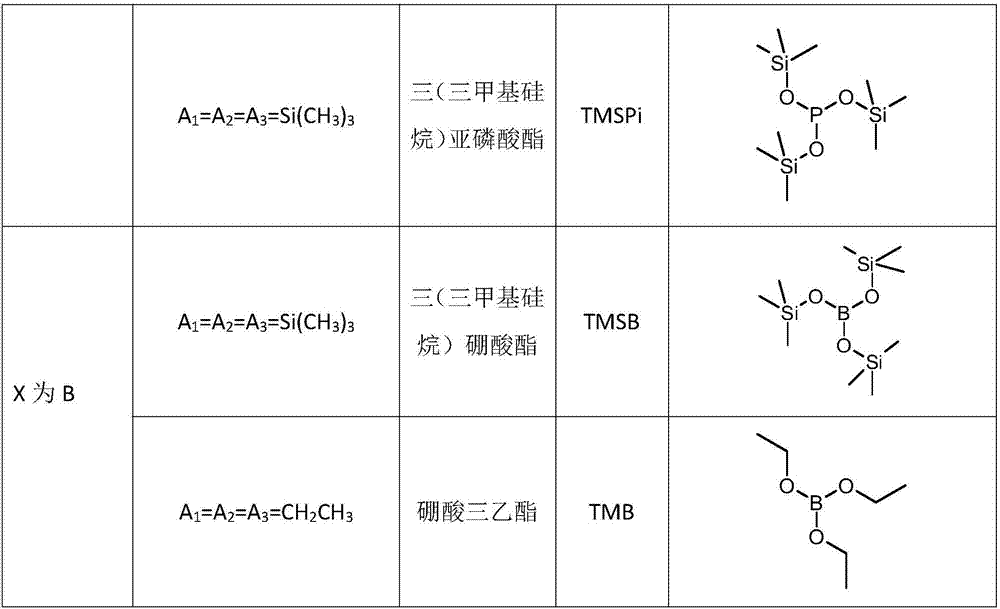Electrolyte solution for silicon based lithium secondary battery and silicon based lithium secondary battery
A secondary battery and electrolyte technology, applied in the electrolyte field, can solve the problem that the low-temperature discharge performance needs to be further improved, and achieve the effects of good low-temperature performance, suppressing the generation of HF, and low impedance
- Summary
- Abstract
- Description
- Claims
- Application Information
AI Technical Summary
Problems solved by technology
Method used
Image
Examples
Embodiment 1
[0042] In the preparation method of the lithium secondary battery in this embodiment, the coating surface density is determined according to the battery size, capacity design value and capacity of positive and negative electrode materials. The positive electrode active material is nickel cobalt lithium manganate (NCM523) material; the negative electrode active material is silicon carbon negative electrode (SiO content in the silicon carbon negative electrode material accounts for 10wt%).
[0043] The positive electrode preparation steps, negative electrode preparation steps, electrolyte preparation steps, diaphragm preparation steps and battery assembly steps are described as follows:
[0044]The positive electrode preparation step is: mix the positive electrode active material NCM523, conductive carbon black and binder polyvinylidene fluoride at a mass ratio of 96.8:2.0:1.2, and disperse them in N-methyl-2-pyrrolidone to obtain the positive electrode slurry Material, the posi...
Embodiment 2~ Embodiment 25
[0058] In Example 2 to Example 25, except that the composition and content of additives in the electrolyte (based on the total mass of the electrolyte) were added as shown in Table 1, the preparation of the rest of the positive electrode, negative electrode, separator, and lithium secondary battery was the same as in Example 1.
[0059] In the embodiment of table 1, structural formula I specific material description
[0060]
[0061]
[0062] See Table 1 for specific substance descriptions of structural formula I in each implementation. In addition, FEC in Table 2 and Table 3 is fluoroethylene carbonate, LiDFOB is lithium difluorooxalate borate, and 1,3‐PS is 1,3‐propanesulfonate Lactone, PRS is propenyl‐1,3‐sultone, DTD is vinyl sulfate, VC is vinylene carbonate.
[0063] Electrolyte additive composition and battery (NCM523 / silicon carbon) performance test result in table 2 each embodiment and comparative example
[0064]
[0065]
[0066]
[0067]
[0068]...
Embodiment 26~ Embodiment 36
[0074] In Examples 26 to 36, NCA is used as the positive electrode material of the lithium secondary battery, and the composition and content of additives in the electrolyte used (based on the total mass of the electrolyte) are added as shown in Table 3, and the battery evaluation cut-off voltage is 4.2V , The discharge lower limit voltage is 2.75V. The preparations of the rest of the negative electrode material, separator, and lithium secondary battery are the same as in Example 1.
[0075] Electrolyte additive composition and battery (NCA / silicon carbon) performance test result in each embodiment and comparative example of table 3
[0076]
[0077]
[0078]
[0079] The positive electrode material is NCA with silicon carbon negative electrode, and the embodiment 26 to embodiment 36 adopting the technical solution of the present invention also have good normal temperature cycle performance, high temperature storage performance and low temperature discharge performanc...
PUM
| Property | Measurement | Unit |
|---|---|---|
| thickness | aaaaa | aaaaa |
| thickness | aaaaa | aaaaa |
Abstract
Description
Claims
Application Information
 Login to View More
Login to View More - R&D
- Intellectual Property
- Life Sciences
- Materials
- Tech Scout
- Unparalleled Data Quality
- Higher Quality Content
- 60% Fewer Hallucinations
Browse by: Latest US Patents, China's latest patents, Technical Efficacy Thesaurus, Application Domain, Technology Topic, Popular Technical Reports.
© 2025 PatSnap. All rights reserved.Legal|Privacy policy|Modern Slavery Act Transparency Statement|Sitemap|About US| Contact US: help@patsnap.com



